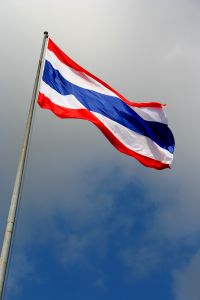Upon booking a stay at the luxurious Shasa Resort & Residences at Koh Samui, many guests often decide where to go or what to do in their bedrooms. Contemplating which of the many Koh Samui attractions should be visited first can be a daunting task for anyone riled up with the sheer thought of endless possibilities.
However, not
all of these crowd-drawers are in the best interest of all parties involved,
especially entrepreneurs who deal some sort of business involving the use of
gibbons.
Although it
is illegal in Thailand to extract these animals from the wild due to their
dwindling numbers, businessmen are still placing orders for as many gibbons as
needed to continue their businesses’ operations.
Nine
species of gibbons within SE Asia are currently listed in Appendix 1 of the
Convention in International Trade in Endangered Species (CITES). In Thailand, the
scarce number of these furry little beasts is attributed to several factors,
including the destruction of their natural habitats.
In
addition, ShaSa Resort management employees
explain that these mammals are being poached for their meat, their medicine,
and pet trade – all of which has the potential to rake in hefty amounts of
cash, which is why the law of gibbon extraction is repeatedly broken.
In order to
acquire gibbon babies, their protective mothers are shot dead. The stolen babes
are then sold as expensive pets, or used in business establishments as
attractions. At some bars, they’re locked up in cages as eye-candy for incoming
customers.
By the time
they reach the age of six or seven, these gibbons tend to get aggressive. Owners
of these apes then resort to filing their canines down and placing a collar
around their necks. Other entrepreneurs often resort to killing their “crowd-drawers”,
and replacing them with newborn gibbons.
At popular
beaches, vendors who approach tourists and offer them a chance to have their
pictures taken (in exchange for a certain amount of money) with gibbons usually
subject these animals to harsh living conditions. Moreover, keep in mind that
up to ten gibbons can be shot dead in order to obtain a single baby gibbon.
The
management of ShaSa Resort frowns
upon such practices, and firmly believes that these beasts should have never
been included in the list of legit Koh Samui attractions as displayed at other websites. To help put an end to this cruel
trade, vacationists are advised to resist the temptation of having their
pictures taken with the poor monkeys.


.jpg)



